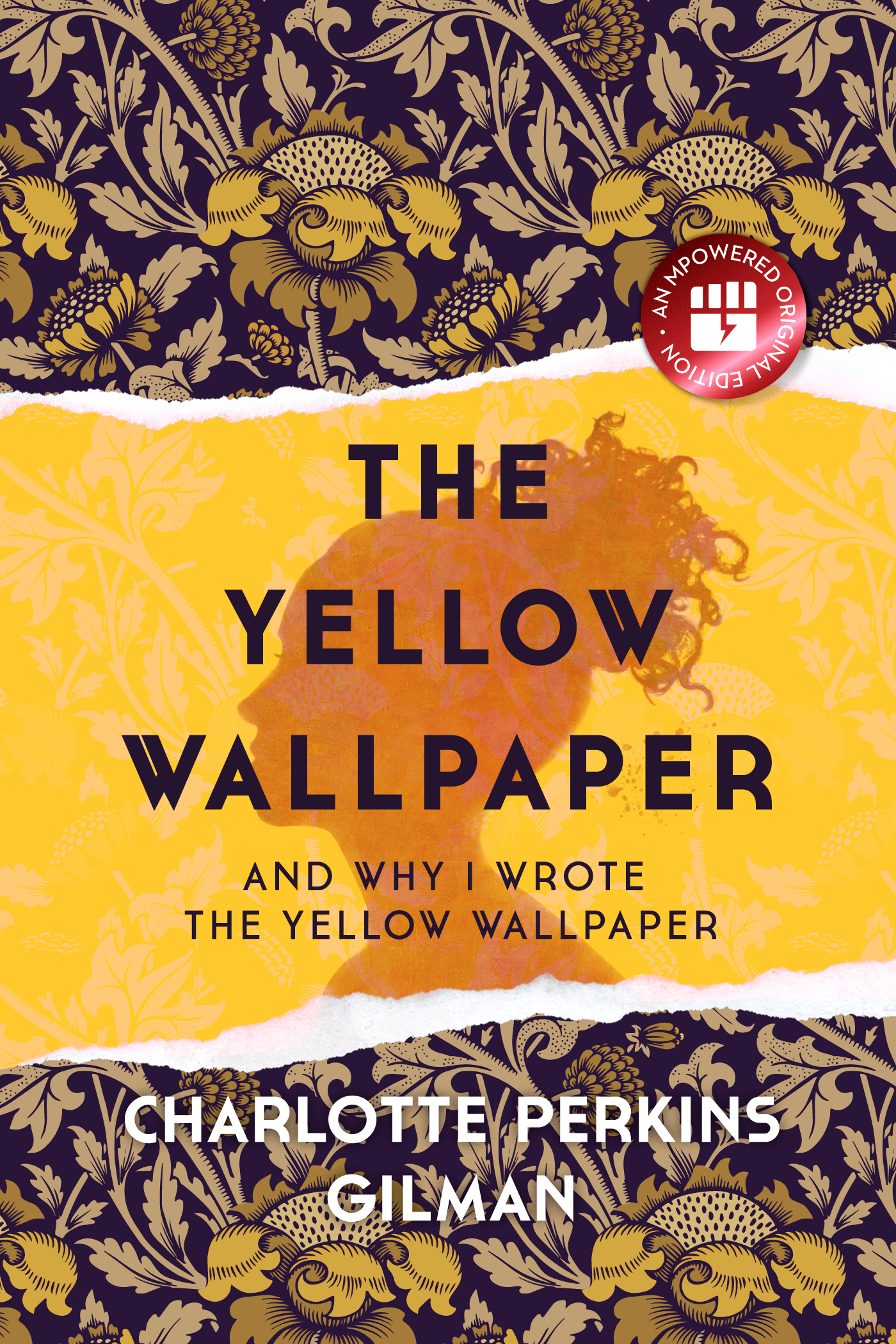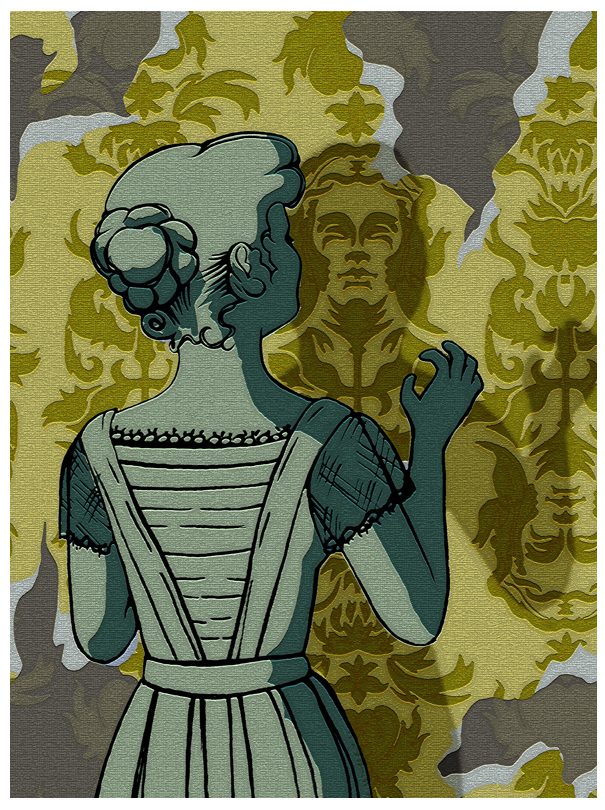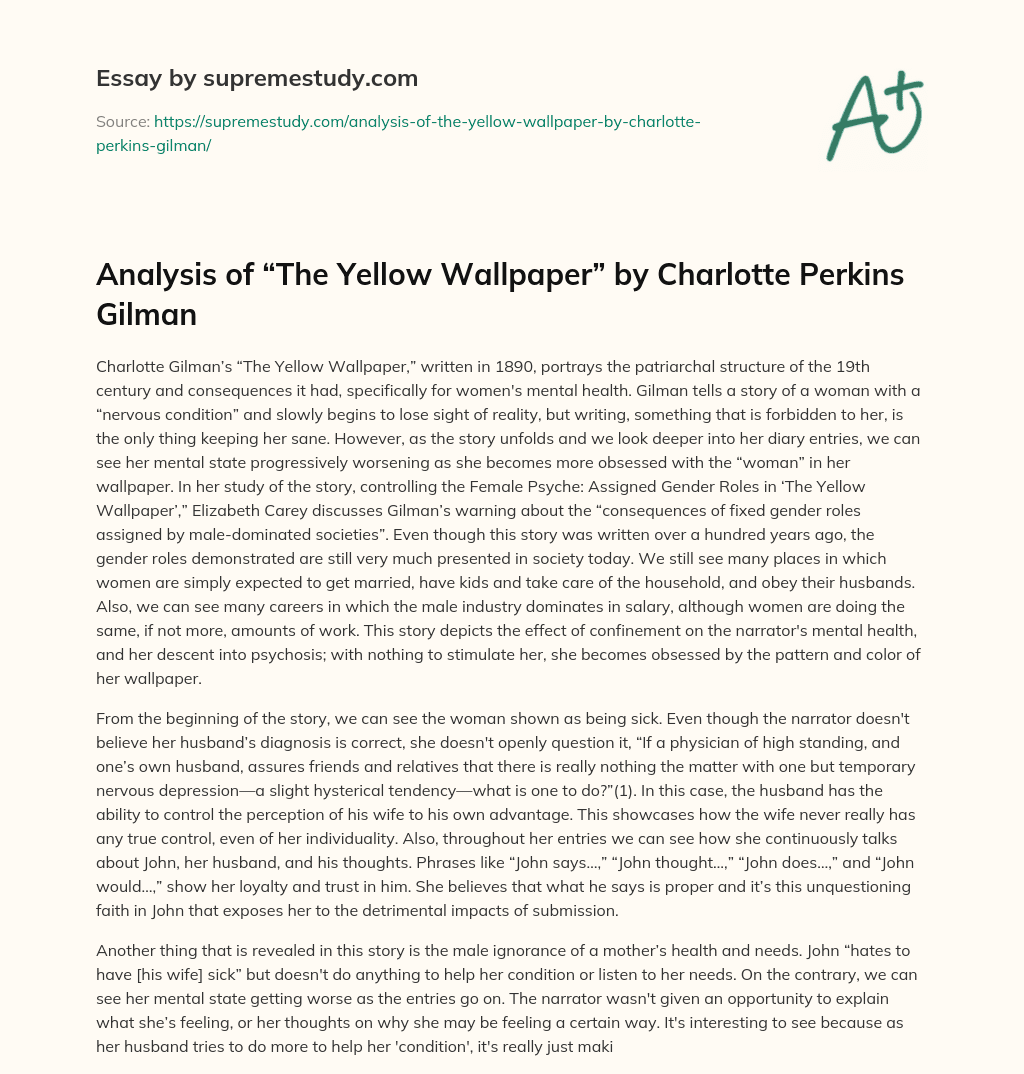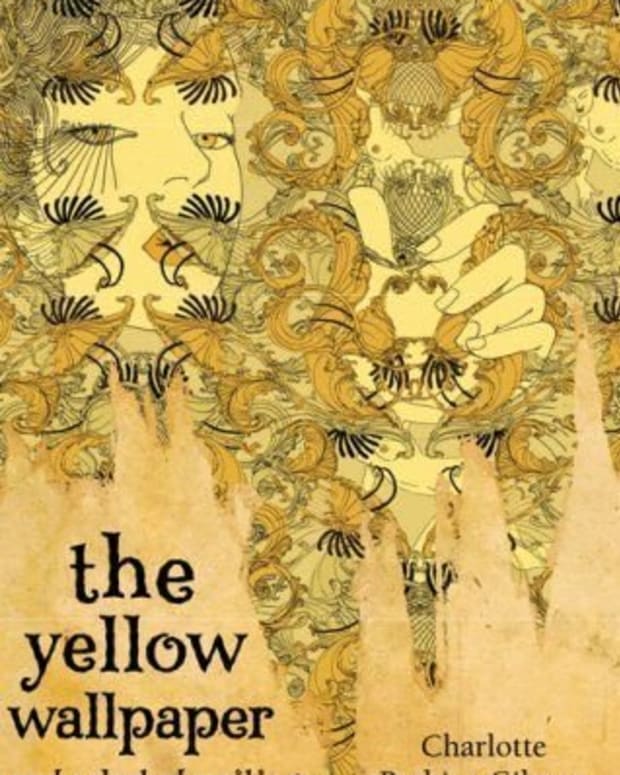Unraveling the Insanity: Key Quotes from Charlotte Perkins Gilman’s "The Yellow Wallpaper"
Associated Articles: Unraveling the Insanity: Key Quotes from Charlotte Perkins Gilman’s "The Yellow Wallpaper"
Introduction
With enthusiasm, let’s navigate by means of the intriguing subject associated to Unraveling the Insanity: Key Quotes from Charlotte Perkins Gilman’s "The Yellow Wallpaper". Let’s weave fascinating info and supply recent views to the readers.
Desk of Content material
Unraveling the Insanity: Key Quotes from Charlotte Perkins Gilman’s "The Yellow Wallpaper"

Charlotte Perkins Gilman’s "The Yellow Wallpaper" stays a chilling and enduring exploration of patriarchal oppression and its devastating impression on girls’s psychological well being. Revealed in 1892, the novella transcends its historic context, resonating with up to date readers by means of its unflinching portrayal of a lady’s descent into insanity. The ability of the story lies not solely in its narrative arc but additionally within the rigorously chosen phrases and phrases that reveal the protagonist’s more and more fractured psyche. Analyzing key quotes presents a profound understanding of the narrator’s journey and the insidious nature of the restrictive societal forces that contribute to her breakdown.
The story’s effectiveness stems from the first-person narration, which permits the reader intimate entry to the narrator’s ideas and emotions. This immediacy is essential in understanding the refined shifts in her psychological state, as her language regularly deteriorates, mirroring her deteriorating psychological well being. The quotes mentioned beneath illustrate this development, highlighting the themes of confinement, management, and the suffocating nature of patriarchal expectations.
The Relaxation Treatment and its Suffocating Results:
Probably the most important features of the story is the "relaxation remedy," prescribed by the narrator’s doctor husband, John. This remedy, removed from being restorative, turns into a type of imprisonment, exacerbating the narrator’s situation. The narrator’s preliminary acceptance of the remedy, albeit with reservations, is obvious within the quote: "Personally, I disagree with their concepts. Personally, I consider that congenial work, with pleasure and alter, would do me good." This early assertion reveals an important ingredient of the narrator’s character: her mental independence and consciousness of her personal wants, that are systematically ignored and suppressed all through the story. The irony is palpable; the "relaxation remedy," meant to heal, turns into a instrument of confinement and management.
Later, the suffocating nature of the remainder remedy turns into extra obvious in her descriptions of her confinement: "John laughs at me, after all, however one expects that in marriage." This seemingly trivial commentary reveals the facility imbalance of their relationship. John’s laughter isn’t merely a lighthearted dismissal; it represents a dismissal of her emotions and considerations, reinforcing her subordinate place. The acceptance of this dismissal as "anticipated in marriage" highlights the societal norms that perpetuate girls’s subjugation.
The Wallpaper as a Metaphor:
The yellow wallpaper itself transcends its literal perform; it turns into a potent image of the narrator’s imprisonment and her wrestle for self-expression. The narrator’s rising obsession with the wallpaper is vividly portrayed by means of her descriptions: "I lie right here on this nice immovable mattress – it’s nailed down, I consider – and comply with that sample about by the hour." This quote reveals the monotony and confinement of her existence, mirroring the repetitive nature of the wallpaper sample. The mattress, "nailed down," symbolizes her bodily and psychological immobility, trapped throughout the confines of her prescribed relaxation.
Her fascination with the wallpaper deepens, changing into a spotlight for her repressed creativity and burgeoning rise up: "There are issues in that paper that no one is aware of however me, or ever will." This assertion suggests a hidden which means throughout the wallpaper, reflecting the narrator’s personal hidden ideas and emotions, suppressed by her husband and society. The wallpaper turns into a canvas onto which she initiatives her personal suppressed self, an area the place she will discover her identification outdoors the constraints imposed upon her.
The deterioration of her psychological state is instantly linked to her obsession with the wallpaper: "I’ve received out finally," stated I, "and am free!" This ultimate, nearly triumphant declaration, nonetheless, is deeply disturbing. Her "freedom" is achieved by means of a whole psychological breakdown, highlighting the damaging penalties of extended suppression and the dearth of company imposed upon her. The wallpaper, initially a supply of fascination, turns into a manifestation of her fractured thoughts, her escape right into a world of her personal making.
John’s Controlling Affect:
John’s function because the controlling husband is essential in understanding the narrator’s descent. He dismisses her considerations, infantilizes her, and actively prevents her from partaking in mental pursuits or expressing her creativity. That is evident in quotes like: "John laughs at me, after all, however one expects that in marriage," and "He says that with my imaginative energy and behavior of story-making, a nervous weak point like mine is certain to result in all method of excited fancies." These quotes reveal John’s condescending perspective in the direction of his spouse, dismissing her experiences and mental capabilities as mere "nervous weak point" and "excited fancies." He actively silences her, lowering her to a passive recipient of his medical and social authority.
His management extends past her mental life, impacting even her fundamental freedoms: "I generally suppose that if we didn’t have such a big home to handle, we must always get alongside extra comfortably." This seemingly innocuous commentary highlights the burden of home duties positioned upon the narrator, additional limiting her autonomy and reinforcing her dependence on John.
The Energy of Language and its Degradation:
The narrator’s language itself displays her psychological disintegration. Initially, her writing is comparatively coherent, although marked by a rising sense of frustration and confinement. As her psychological state deteriorates, her language turns into fragmented, reflecting her more and more disordered ideas. The shift from rational commentary to delusional pronouncements is a strong indicator of her descent into insanity. The usage of repetition, fragmented sentences, and more and more vivid imagery all contribute to this impact.
The ultimate sentence, "I’ve received out finally," stated I, "and am free!" encapsulates this linguistic deterioration. The seemingly triumphant declaration is juxtaposed with the underlying horror of the scenario; her freedom is achieved by means of a whole psychological collapse. The fragmented construction and the chilling implications of her "freedom" underscore the devastating results of the oppressive forces she has endured.
In conclusion, the important thing quotes from "The Yellow Wallpaper" supply a strong lens by means of which to grasp the novella’s enduring impression. They reveal the insidious nature of patriarchal oppression, the devastating penalties of silencing girls’s voices, and the damaging energy of societal expectations that deny girls autonomy and self-expression. Via the narrator’s evolving language and her more and more determined makes an attempt to reclaim her identification, Gilman crafts a timeless story of confinement, rise up, and the tragic value of societal constraints. The story’s enduring energy lies in its potential to evoke empathy for the narrator’s plight and to ignite a important examination of the forces that proceed to form girls’s experiences on this planet. The quotes, rigorously chosen and strategically positioned, function essential constructing blocks in setting up this highly effective and unsettling narrative. They aren’t merely phrases on a web page; they’re fragments of a shattered thoughts, a testomony to the enduring energy of oppression and the pressing want for social change.








Closure
Thus, we hope this text has supplied helpful insights into Unraveling the Insanity: Key Quotes from Charlotte Perkins Gilman’s "The Yellow Wallpaper". We hope you discover this text informative and useful. See you in our subsequent article!